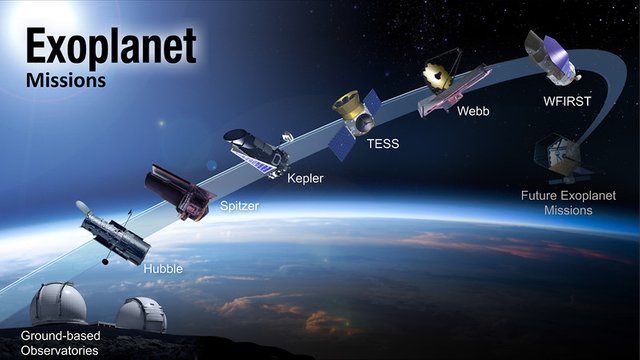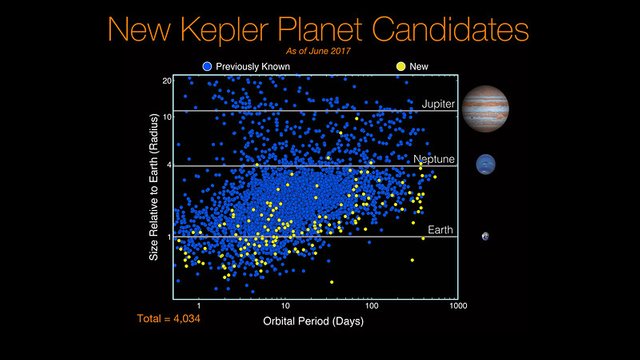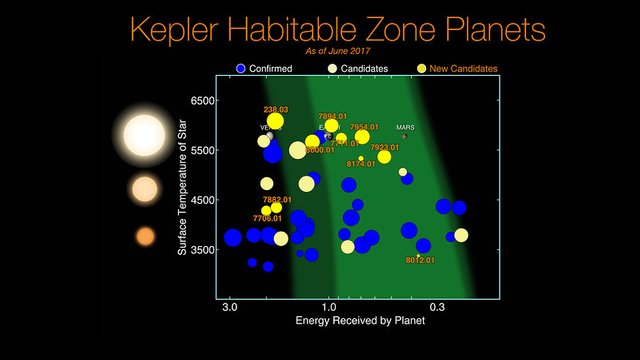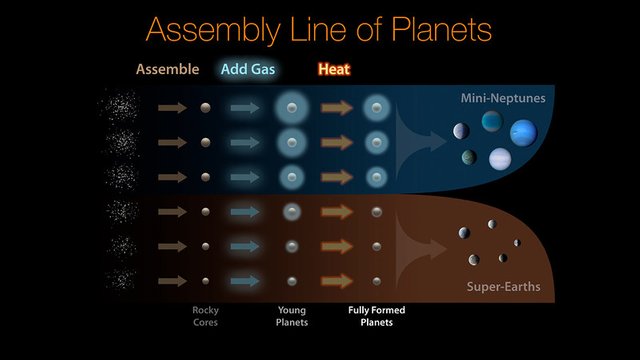Kepler telescope team: 219 new exoplanets, 10 of them are of Earth's scale and their orbits are in habitable zone
NASA announced the latest results from the Kepler mission. Kepler is the first mission capable to find Earth-size planets. Its catalog is the roadmap for the follow-on observations with most sophisticated present and future telescopes.

Image: NASA
The latest Kepler catalog of exoplanet candidates includes 4034 bodies. 2335 of these have been confirmed as planets. The blue dots show planet candidates from previous catalogs, while the yellow dots show new candidates from the eighth catalog. New planet candidates continue to be found at all periods and sizes due to continued improvement in detection techniques. Notably, 10 of these new candidates are near-Earth-size and at long orbital periods, where they have a chance of being rocky with liquid water on their surface.

Image: NASA/Ames Research Center/Wendy Stenzel
Next diagram shows exoplanets that are less than twice the size of Earth and orbit in the stars' habitable zone – the range of distances from a star where liquid water could pool on the surface of an orbiting planet. The dark green area represents an optimistic estimate for the habitable zone, while the brighter green area represents a more conservative estimate for the habitable zone. On the left parent star's surface temperature is shown. Brighter yellow circles show new planet candidates , while pale yellow circles show previously discovered planets. . The sizes of the colored disks indicate the sizes of these exoplanets relative to one another and to the image of Earth, Venus and Mars, placed on this diagram for reference. Note that the new candidates tend to be around stars more similar to the sun – around 5,800 Kelvin – representing progress in finding planets that are similar to the Earth in size and temperature.

Image: NASA/Ames Research Center/Wendy Stenzel
It is clearly seen from the new catalog that planets are assembled and sorted into two distinct size classes. First, the rocky cores of planets are formed from smaller pieces. Then, the gravity of the planets attracts hydrogen and helium gas. Finally, the planets are "baked" by the starlight and lose some gas. At a certain mass threshold, planets retain the gas and become gaseous mini-Neptunes; below this threshold, the planets lose all their gas, becoming rocky super-Earths.

Image: NASA/Ames Research Center/Wendy Stenzel
New research distinctly shows that our galaxy has a strong preference for two types of planets: rocky planets up to 1.75 times the size of Earth, and gas-enshrouded mini-Neptune worlds, which are from 2 to 3.5 times the size of Earth (or somewhat smaller than Neptune). Our galaxy rarely makes planets with sizes in between these two groups in other words, there are two branches of differently formed planets with gap between them.
They do so extraordinary work!
If the day arrives when they actually find someting the world will change forever.
This is only beginning !
Hi, we have a new project to make weekly videos with the main news from the cryptocurrency world. If you are interested, take a look: Steemit top news
Upvoted your post! =)
Best,
DropNews Team
Top news of the cryptocurrency world
Space Is not real, It Is a mathematical construct.
Cool, I just posted about a trip to Nasa I took a week ago. You should check it out. Didn't get to see the Webb but I did see some of the other satellites they are working on in the assembly building. Upvoted and followed.